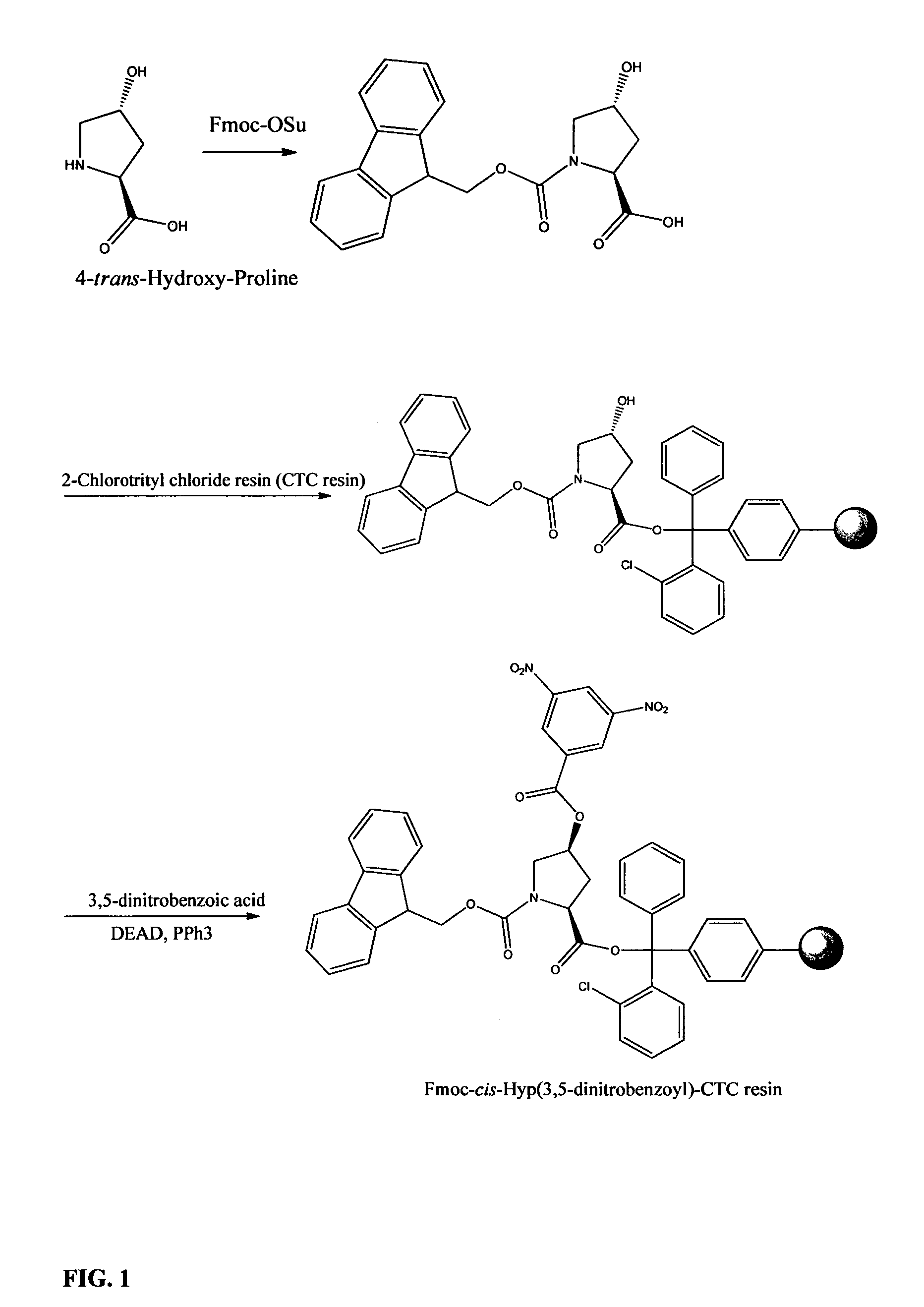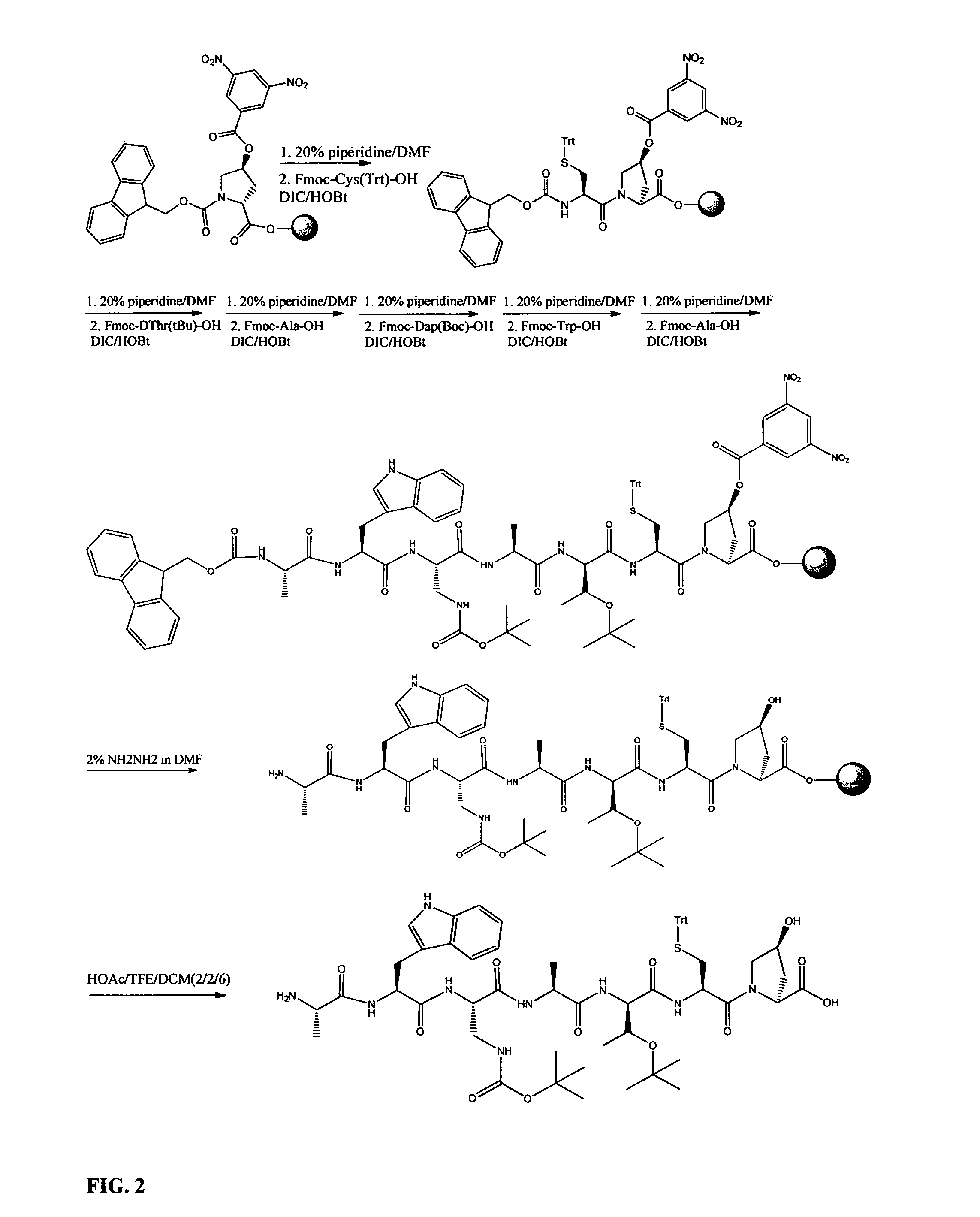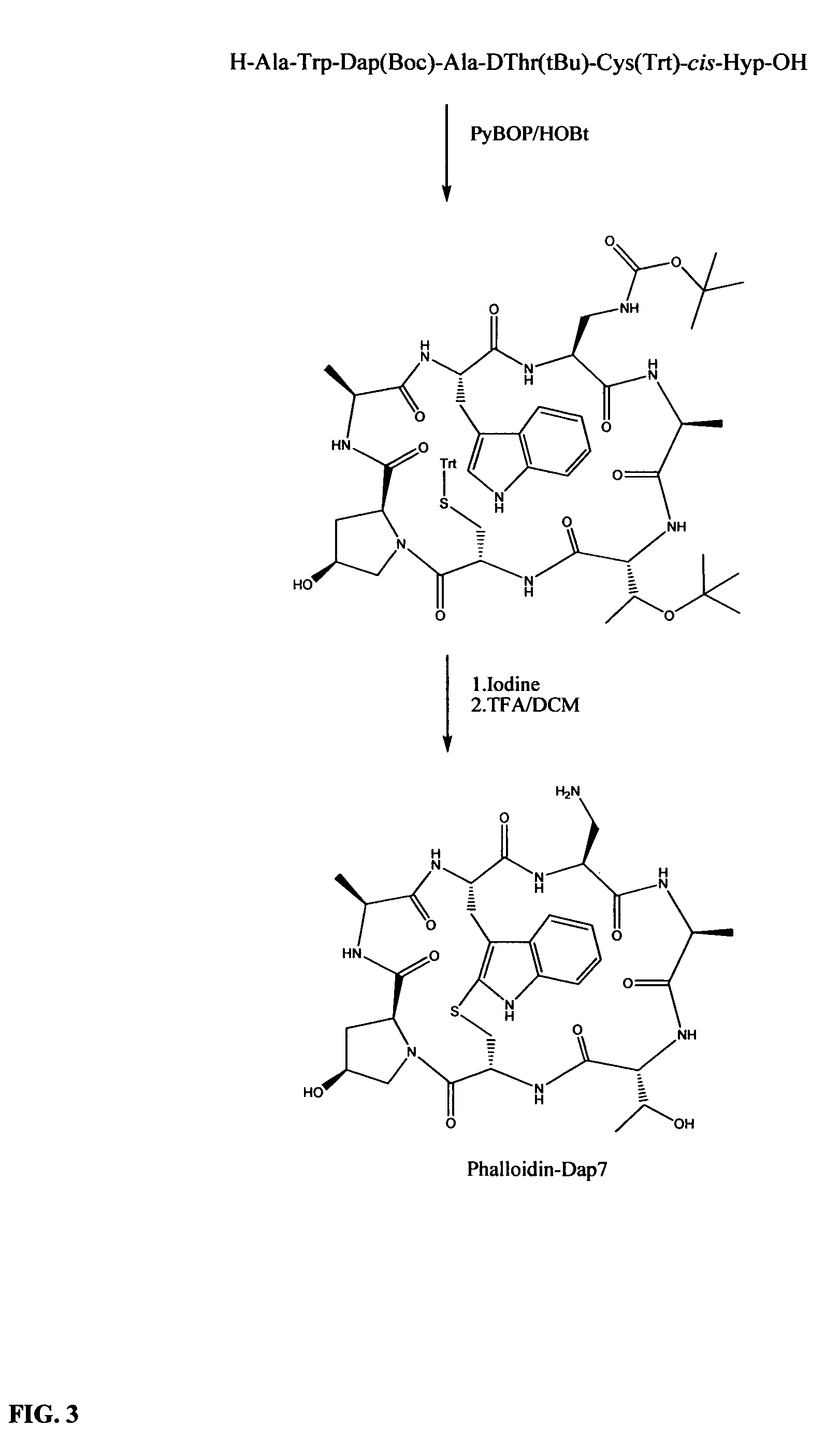Preparation of phalloidin and its derivatives
a technology of phalloidin and derivatives, applied in the field of new products, can solve the problems of loss of toxicity, low yield, and disturbance of the equilibrium between f-actin and g-actin of this cytoskeletal protein
- Summary
- Abstract
- Description
- Claims
- Application Information
AI Technical Summary
Benefits of technology
Problems solved by technology
Method used
Image
Examples
example 1
[0074]Preparation of Fmoc-trans-Hyp-OH:
[0075]To a suspension of H-trans-Hyp-OH (122.5 g, 362 mmol) in THF / H2O (100 mL / 200 mL) is added 2N Na2CO3 (250 mL), along with addition of a suspension of Fmoc-OSu in THF (700 mL). The mixture is stirred at room temperature overnight. The mixture is diluted with H2O (2700 mL) and extracted with ether / petroleum ether (500 mL / 500 mL) The aqueous layer is acidified by 6N HCl and then extracted with ethyl acetate (1×1000 mL, 1×500 mL). The combined extract is washed with brine once and dried over Na2SO4. After removal of most of solvent, the residue is treated with ethyl ether (200 mL). The white solid is filtered and dried under vacuum. Yield: 125.8 g (356 mmol, 98%)
example 2
[0076]Attachment of Fmoc-trans-Hyp-OH to 2-chlorotrityl chloride resin (CTC resin):
[0077]To the suspension of 2-Chlorotrityl chloride resin (100 g, 1.4 mmol / g) in DMF (500 mL) is added DIPEA (87.5 mL, 500 mmol), followed by a solution of Fmoc-trans-Hyp-OH (49.5 g, 120 mmol) in DMF (250 mL). The mixture is stirred at room temperature overnight. Methanol (100 mL) is added and the stirring continues for 30 min. The resin is filtered and washed with DMF (3×500 mL), DCM (3×500 mL), ether (1×500 mL). The resin is dried under high vacuum overnight. Yield of Fmoc-trans-Hyp-CTC resin: 129 g (substitution 0.58 mmol / g)
example 3
[0078]Configuration inversion of 4-hydroxy-proline on resin: preparation of Fmoc-cis-Hyp(3,5-dinitrobenzoyl)-CTC resin:
[0079]Fmoc-trans-Hyp-CTC resin (125 g, 72.5 mmol) is swelled in anhydrous THF (1000 mL) for 20 min, and then cooled in 0° C. (ice-water bath). 3,5-Dinitrobenzoic acid (46.1 g, 217.5 mmol) and PPh3 (57.0 g, 217.5 mmol) are added, followed by addition of diethyl azodicarboxylate (40% wt. in toluene, 99.1 mL, 217.5 mmol). The mixture is stirred at 0° C. for 3 h and then at room temperature overnight. After the reaction is complete (monitored by microscale cleavage and HPLC analysis), the resin is filtered and washed with DCM (3×500 mL), DMF (3×500 mL), DCM (3×500 mL), ether (1×500 mL). The resin is dried under high vacuum. Yield of Fmoc-cis-Hyp(3,5-dinitrobenzoyl)-CTC resin: 146 g (0.50 mmol / g)
PUM
| Property | Measurement | Unit |
|---|---|---|
| temperature | aaaaa | aaaaa |
| flow rate | aaaaa | aaaaa |
| structure | aaaaa | aaaaa |
Abstract
Description
Claims
Application Information
 Login to View More
Login to View More - R&D
- Intellectual Property
- Life Sciences
- Materials
- Tech Scout
- Unparalleled Data Quality
- Higher Quality Content
- 60% Fewer Hallucinations
Browse by: Latest US Patents, China's latest patents, Technical Efficacy Thesaurus, Application Domain, Technology Topic, Popular Technical Reports.
© 2025 PatSnap. All rights reserved.Legal|Privacy policy|Modern Slavery Act Transparency Statement|Sitemap|About US| Contact US: help@patsnap.com



